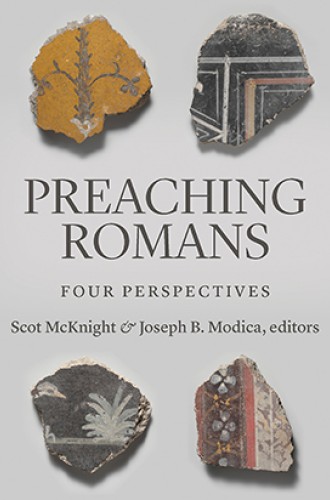Four views of Paul’s letter to the Romans
In Preaching Romans, a range of scholars present their perspectives in complementary ways.
Every week—in addition to counseling sessions, hospital visits, staff meetings, and budget reviews—pastors are expected to design a sermon that engages scripture with theology for a congregation with a vast array of experiences, interests, and educational backgrounds. In this work, Preaching Romans is invaluable for both preachers and their congregations.
Edited by Scot McKnight and Joseph B. Modica, the book is structured around four streams of Pauline interpretation: the Reformational perspective, the new perspective, the apocalyptic perspective, and the participationist perspective. With essays by biblical scholars and sermons by prominent clergy, the book puts each of the four perspectives into conversation with Paul’s letter to the Romans.
The Reformational perspective (which is also known as the traditional or Lutheran perspective) focuses on four theological features of Paul’s letters: the sinfulness of every human, the inadequacy of good works to bring about righteousness, atonement for sin through Jesus’ death and resurrection, and righteousness by the grace of God through faith in Jesus. Interpreters using this approach tend to see in Romans the juxtaposition of human sinfulness, magnified by the law, with the saving grace of God through Jesus.






